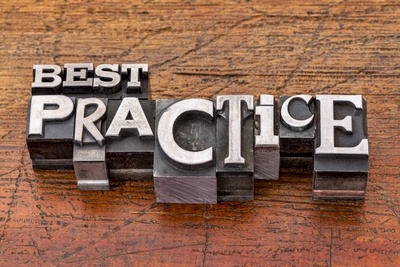 by Ryan H. Flax, Esq.
by Ryan H. Flax, Esq.
(Former) Managing Director, Litigation Consulting & General Counsel
A2L Consulting
I’ve passed another anniversary at A2L Consulting and in my time as a litigation consultant I’ve been both surprised and reassured about the state of the litigation business and its players (I also wrote about my surprises upon beginning my career as a litigation consultant). I’ve seen both the very best and quite bad litigators in action and have consulted for both. Although some litigators don’t live up to my high standards, I’m impressed by many litigators as both professionals and people. Here are seven of my observations over these years that I think might help you in your practice.
- Many Lawyers Confuse Chronology With Storytelling
It is almost universally accepted that storytelling is important to engaging an audience (including a jury) and that framing a client’s case as a compelling story is key to doing your best at trial, particularly in opening statements. But more often than not, when I ask a litigation team what their client's story is, rather than explain “why we’re really here” as they would to a jury and illustrate some conflict and emotionally valuable moral that is critical to juror engagement, they rattle off some chronological series of events that led to a legal injury to their client or some misconstrued relationship by the opposing party. These are not stories and presenting a case framed this way, while possibly interesting to a legal scholar, is not compelling to a juror.
I’m surprised that so many smart litigators fall into the chronology trap and forsake emotional connection to engage jurors. I don’t advise pandering to a jury or excessive emoting by a litigator, but for a jury to care about you and your client and generate the stamina jurors need for a trial, litigators must tap into their emotional brains. This is not done by an information dump, a calendar, or using a lot of words.
A story answers the question posed above – why are we here today, in this courtroom? A story also has all the stuff you learned in grade school: a beginning, middle, climax, and end, characters, setting, theme, and moral.
- Some Lawyers Focus Too Much on Too Small Things
It’s easy for litigators (even more so for the associates doing the day-to-day stuff) to over-focus on every detail. The prospect of overlooking a potentially key piece of evidence or being surprised by an unknown fact exposed by opposing counsel is frightening for attorneys (it was for me), so we often wind up thinking way too much about every little thing in a case. This is called being “in the weeds,” and when you’re there it’s exceedingly difficult to escape without help. It happens with the selection of evidence, with witness prep, and even with the development of graphics, where sometimes counsel wants to very carefully think over every aspect, e.g., choosing what font style and color palette and slide aspect ratio will best work for their case.
On each of these things, I urge counsel to take a step back and delegate where possible so they can focus on the BIG PICTURE. The best first-chair litigators do this naturally, and the rest of us need to do it deliberately. Attorney time and brainpower should be spent on figuring out what it will take to win. Let litigation graphics consultants decide what font works best for your opening statement presentation. It will be a relief when you do.
- Many Litigators Don’t Know What Tools Are Available
Even though the litigation consulting industry has been around for decades, I still find a lot of lawyers really don’t know what we do (in total) and what persuasive tools are at their immediate disposal. Often, my first conversations with new clients include questions like, “What all do you do?” The concepts of litigation graphics, presentation and persuasion consulting, trial technology, and jury consulting are not concrete ideas in many litigators’ minds, and I often have to educate clients on what we have in our (their) toolbox.
Most often, such attorneys think of litigation graphics as discrete images created for specific points they want to make during trial. They don’t understand that, while that’s a part of our work, such graphics won’t alone provide the immersive visual experience necessary (particularly during opening statements) to persuade jurors.
Also, many litigators seriously consider doing their own graphics and/or in-court technology presentation. They have Microsoft PowerPoint and Word and can cut and paste and they’ve heard that iPad apps make evidence presentation easy. The former is never a good idea and, while the later might be true for some situations, e.g., a hearing or very small trial, it’s not going to work in any bigger trial that could have hundreds or thousands of exhibits. There is a lot to know about crafting persuasive trial visuals and there are professionals who do nothing but build trial databases, edit deposition videos, and run trial presentation software to create a seamless trial for you and your jurors. Litigators should understand this and use professionals (and let your paralegals focus on what they should be doing as well).
- Litigators Still Wait Too Long to Bring in a Litigation Consultant
Even though they know better, most of the time litigation teams wait until just weeks before trial to engage a litigation consultant / jury consultant / graphics team / trial tech. Even though they know waiting makes it a more difficult budget-sell to their client, leads to an uncomfortable rush to develop graphics, may make mock jury exercises impossible, and forecloses the possibility of building discovery around what they learn from a consultant, they wait. I urge early planning for trial (at the complaint/answer stage), which is the right time to develop that important two-track litigation strategy, and begin working on your case story and graphics as early as possible. Although we can certainly help you late in the game, we can do a lot more before halftime.
- A Lot of Litigation Graphics are Subpar
When I get the chance, I always go to my client’s opening statements and then to as much of the rest of their trials as possible. So I get to see the litigation graphics developed by/for opposing counsel. I’m consistently underwhelmed. It's impossible to say whether these poor visuals directly led to the oppositions' losses at trial, but they didn't help.
More often than not I see a lot of text-heavy graphics – a severe barrier to juror engagement and communication. I see a severe lack of style, clarity, and intentional design - this screams lack of preparation and deliberateness in presentation. There are key visual presentation concepts that, if understood and followed, lead to persuasive graphics, e.g., font type, color choice, simplicity, complexity, branding, style, and others. There is no shortage of information about these concepts out there, but it seems most folks are not paying attention. We are.
- Lawyers Don’t Spend Money Where It Can Help Them
Litigation consulting, jury research, trial graphics, and trial technology cost your client money – very true. But the ROI on these services far outweighs their expense in bigger cases. The cost of a typical larger litigation, such as an employment case, hovers just around $1M. A typical bigger patent case costs about twice that amount. However, the services and tools that could be used to hone your persuasive game at any stage of such litigations turn out to be a very, very small fraction of these costs.
Take a big-time patent and breach of contract case where our client won over $300 million in damages. The costs for A2L’s services were well below $200,000, about 5% or less of the litigation budget and about 0.005% or less of the damages award. I know that our services played an important role in the victory, even though the trial team was beyond outstanding.
But, we still see litigation counsel struggling to decide whether $30,000 or $50,000 is the right spend for a mock jury focus group (a $20K difference that could be the difference between scientific data results and seat of the pants analysis) or whether to spend $12,000 to have a professional trial tech hot seat operator at trial (they should), or whether they can make their own graphics for opening statements in house (they cannot). In my view, saving a penny to lose a dollar makes no sense.
- Practice is as Important as Everyone Thinks
Finally, it’s been shown time and time again that practicing oral argument makes sense. The more you practice, the better you’ll do. It takes time, but again, the ROI on this time investment is tremendous. When litigators do several full speed run-throughs for opening statements or oral arguments, I see them do a fantastic job at the real thing. They don’t need notes, they know their subject matter, they are and appear more comfortable, they seem more reasonable, and they use their graphics perfectly in a compelling way. Not practicing so that you can feel and seem more spontaneous at opening is a recipe for a poor performance.
Practice. And start early.
Other articles and resources about storytelling, litigation consulting and trial preparation from A2L Consulting:
- 14 Differences Between a Theme and a Story in Litigation
- 11 Things Your Colleagues Pay Litigation Consultants to Do
- Conflict Check: Interested in hiring A2L? You're not alone.
- Storytelling Proven to be Scientifically More Persuasive
- Winning BEFORE Trial - Part 3 - Storytelling for Lawyers
- Don't be another timeline lawyer - tell a story
- 7 Things You Never Want to Say in Court
- FREE Webinar: Storytelling for Litigators
- FREE BOOK: Storytelling for Litigators
- 6 Reasons The Opening Statement is The Most Important Part of a Case
- Are you smarter than a soap opera writer?
- Stories must close loops to be effective
- 10 Videos to Help Litigators Become Better at Storytelling
- How to paint your client as a hero (with free infographic)
- 5 Essential Elements of Storytelling and Persuasion
- 5 Keys to Telling a Compelling Story in the Courtroom
- Why Trial Graphics are an Essential Persuasion Tool for Litigators
- 10 Things Litigation Consultants Do That WOW Litigators
- 10 Types of Value Added by Litigation Graphics Consultants





Leave a Comment